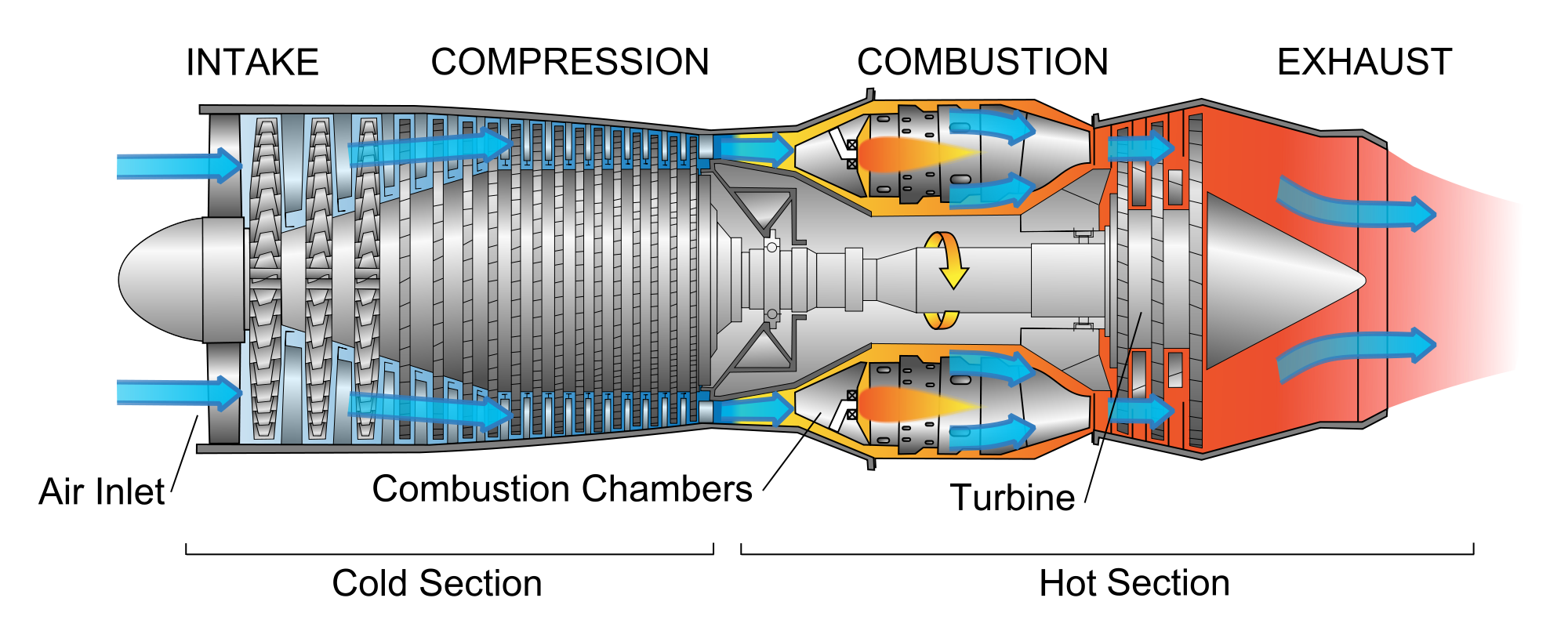How jet engines work
Today, we finally attended the highly anticipated and much needed jet engine course! Despite understanding the core principles of the jet engine early on in our employment, that air is sucked in in the front, compressed, ignited along with fuel and sent out the back of the engine, we realised there were many things we did not fully understand. For example, why the temperature in the engine should be as high as possible, why you run most engines on Jet A1 fuel, how the air should swirl inside the combustion chamber, why its not desired to fly commercial aircrafts at supersonic speeds and why fighter jets not always fly with the afterburner activated. There is unfortunately not enough space to answer all of these questions here and every answer will most likely lead to many more follow-up questions in this technically complex engineering, but it is easy to see why aviation is fascinating so many people all over the world!

We were of course captivated by the lecture, but if you find this sort of knowledge completely dull you might want to reconsider a career within aerospace. The technical aspects are always present, even if you do not work directly with technical matters, and it quickly becomes very complex. We are beginning to realise why people jokingly say you are considered “newly employed” at the company for your first ten years, that is simply the time it takes to fully understand the products, the business and the production.
Jet engines explained in 2 minutes: